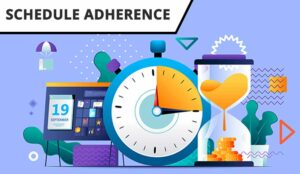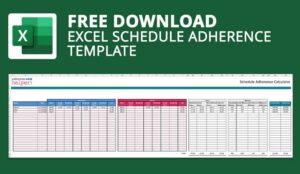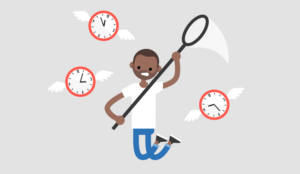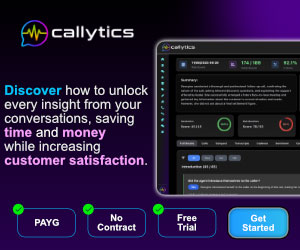Great customer service hinges on having the right people in place, at the right time, with the right skills to handle customer issues. But if agents aren’t where they need to be – where they were scheduled to be – the best workforce planning processes are all for naught.
Schedule adherence measures how closely agents follow, or adhere to, their scheduled activities, including meal, breaks and other scheduled offline events. Any deviation from the schedule results in a lower adherence score.
The higher the schedule adherence, the more efficient agents will be, which can even reduce the headcount required to serve forecasted volume.
It’s a popular measurement: Nearly half of contact center leaders consider it a “very important” metric, according to a survey by Call Centre Helper.
About 80% of contact centers have a percentage goal for measuring employee adherence, according to the winter 2019 survey by the Society of Workforce Planning Professionals (SWPP), and they’re typically targeting adherence in the 92 to 94% range.
Among the fifth of contact centers that don’t track the percentage of time agents adhere to their schedules, leaders say they’re worried about the impact it will have on attrition, are hampered by union constraints or lack proper tools. Many of them say they simply have too many metrics in use already.
Contact center leaders measure adherence to gain accurate visibility into projected coverage necessary for intraday decision-making.
It promotes operational efficiency, increased productivity, reduced occupancy, lower average wait times and greater customer satisfaction. And because it provides insight into the historical use of agent resource, measuring adherence enables the business to more effectively plan future staffing needs.
To realize these benefits, contact center leaders must avoid these common adherence-related pitfalls:
- Having no adherence goal. There’s no time like the present to begin measuring adherence. To get started, contact centers can set targets based upon the average adherence scores of agents today and then periodically raise the goal as performance improves.
- Having the wrong adherence goal. In a contact center with varying call lengths, a one-size-fits-all goal won’t work. Agents who typically handle short calls will find it easier to take breaks as scheduled, while agents who handle long calls are much more likely to get stuck on a call and miss a scheduled break, affecting adherence.
- Having no way to measure average adherence daily. Just 31% of contact centers measure adherence daily, the SWPP survey found. Another 7% hold employees accountable to weekly adherence goals, while about half (52%) look at adherence monthly.
- Holding only agents accountable for adherence. In addition to measuring agents’ adherence, contact center managers also need to hold themselves accountable for working with the WFM team to maintain schedule accuracy.
- Pulling employees offline without approval. Supervisors are often allowed to pull agents offline without first getting approval from the workforce management team, which leads to an increase in after-the-fact exceptions and can affect the contact center’s ability to meet service level objectives.
- Entering exceptions for long calls and after the fact. Supervisors sometimes adjust breaks, lunches or activities after a call takes longer than usual, but this just masks the agent’s true adherence. Appropriate adherence goals already take occasional long calls into consideration.
By measuring and improving adherence, contact centers can more efficiently meet service level goals. Workforce management solutions, combined with effective schedule management processes, can help.
This blog post has been re-published by kind permission of NiCE-ltd – View the Original Article
For more information about NiCE-ltd - visit the NiCE-ltd Website
Call Centre Helper is not responsible for the content of these guest blog posts. The opinions expressed in this article are those of the author, and do not necessarily reflect those of Call Centre Helper.
Author: NiCE-ltd
Published On: 18th Jan 2021 - Last modified: 20th May 2022
Read more about - Guest Blogs, NiCE






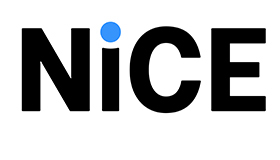 NiCE (NASDAQ: NICE) is transforming the world with AI that puts people first. Our purpose-built AI-powered platforms automate engagements into proactive, safe, intelligent actions, empowering individuals and organizations to innovate and act, from interaction to resolution. Trusted by organizations throughout 150+ countries worldwide, NiCE’s platforms are widely adopted across industries connecting people, systems, and workflows to work smarter at scale, elevating performance across the organization, delivering proven measurable outcomes.
NiCE (NASDAQ: NICE) is transforming the world with AI that puts people first. Our purpose-built AI-powered platforms automate engagements into proactive, safe, intelligent actions, empowering individuals and organizations to innovate and act, from interaction to resolution. Trusted by organizations throughout 150+ countries worldwide, NiCE’s platforms are widely adopted across industries connecting people, systems, and workflows to work smarter at scale, elevating performance across the organization, delivering proven measurable outcomes. 
